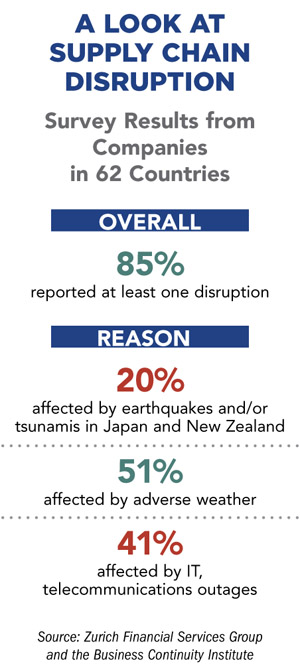 NU Online News Service, Dec. 1, 12:24 p.m. EST
NU Online News Service, Dec. 1, 12:24 p.m. EST
A significant percentage of companies were affected by supply chain disruption over the last 12 months, according to recent survey.
In the survey sponsored by Zurich Financial Services Group and conducted by the Business Continuity Institute (BCI), 85 percent of companies say they experienced at least one supply chain disruption.
Want to continue reading?
Become a Free PropertyCasualty360 Digital Reader
Your access to unlimited PropertyCasualty360 content isn’t changing.
Once you are an ALM digital member, you’ll receive:
- Breaking insurance news and analysis, on-site and via our newsletters and custom alerts
- Weekly Insurance Speak podcast featuring exclusive interviews with industry leaders
- Educational webcasts, white papers, and ebooks from industry thought leaders
- Critical converage of the employee benefits and financial advisory markets on our other ALM sites, BenefitsPRO and ThinkAdvisor
Already have an account? Sign In Now
© 2025 ALM Global, LLC, All Rights Reserved. Request academic re-use from www.copyright.com. All other uses, submit a request to [email protected]. For more information visit Asset & Logo Licensing.








